
Lviv is the largest city in western Ukraine, as well as the sixth-largest city in Ukraine, with a population of 717,500. It serves as the administrative centre of Lviv Oblast and Lviv Raion, and is one of the main cultural centres of Ukraine. Lviv also hosts the administration of Lviv urban hromada. It was named after Leo I of Galicia, the eldest son of Daniel, King of Ruthenia.
The Polish Brethren were members of the Minor Reformed Church of Poland, a Nontrinitarian Protestant church that existed in Poland from 1565 to 1658. By those on the outside, they were called "Arians" or "Socinians", but themselves preferred simply to be called "Brethren" or "Christians", and, after their expulsion from Poland, "Unitarians".

Red Ruthenia, or Red Rus or Red Russia, is a term used since the Middle Ages for the south-western principalities of the Kievan Rus', namely the Principality of Peremyshl and the Principality of Belz. Nowadays the region comprises parts of western Ukraine and adjoining parts of south-eastern Poland. It has also sometimes included parts of Lesser Poland, Podolia, Right-bank Ukraine and Volhynia. Centred on Przemyśl and Belz, it has included major cities such as: Chełm, Zamość, Rzeszów, Krosno and Sanok, as well as Lviv and Ternopil.
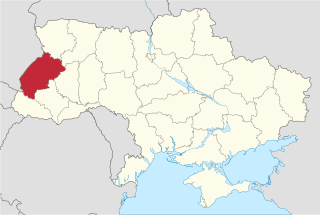
Lviv Oblast, also referred to as Lvivshchyna, is an oblast in western Ukraine. The capital of the oblast is the city of Lviv. The current population is 2,478,133.

Buchach is a city located on the Strypa River in Chortkiv Raion of Ternopil Oblast (province) of Western Ukraine. It hosts the administration of Buchach urban hromada, one of the hromadas of Ukraine. Buchach rests 135 kilometres south-east of Lviv, in the historic region of Halychyna (Galicia). The city was located in the Polish–Lithuanian Commonwealth until the partitions, followed by the Habsburg monarchy (1772—1804), Austrian empire (1804—1867), Austria-Hungary (1867—1918), West Ukrainian People's Republic (1918—1919), the Second Polish Republic (1919—1939), and the Ukrainian SSR of the Soviet Union (1939-1991). The population was estimated at 12,171.

The Ivan Franko National University of Lviv is a public university in Lviv, Ukraine.
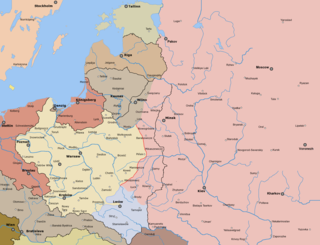
The Battle of Lemberg took place from November 1918 to May 1919 and was a six-month long conflict in the region of Galicia following the dissolution of the Austro-Hungarian Empire. The battle was fought between forces of the local West Ukrainian People's Republic and urban Polish resistance, assisted later by the invading Polish military for the control over the city of Lviv. The battle sparked the Polish-Ukrainian War, ultimately won by Poland as both nations fought the Ukrainian-Soviet War and Polish-Soviet Wars concurrently.
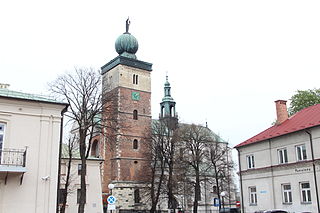
Miechów is a town in Poland, in Lesser Poland Voivodeship, about 40 kilometres north of Kraków. It is the capital of Miechów County. Population is 11,852 (2004). Miechów lies on the Miechówka river, along European route E77. The area of the town is 15 square kilometres (6 sq mi), and it has a rail station, located on the main railroad which connects Kraków with Warsaw.

Rava-Ruska is a city in Lviv Raion, Lviv Oblast, western Ukraine. It is a border town between Ukraine and Poland. The border checkpoint is situated 8 km (5 mi) west of the city, along the international autoroute Warsaw–Lviv. Rava-Ruska hosts the administration of Rava-Ruska urban hromada, one of the hromadas of Ukraine. Its population is approximately 8,494.

Andrey Sheptytsky, OSBM was the Greek Catholic Archbishop of Lviv and Metropolitan of Halych from 1901 until his death in 1944. His tenure in office spanned two world wars and six political regimes: Austrian, Ukrainian, Soviet, Polish, Nazi German, and again Soviet.
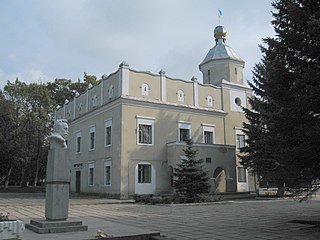
Rudky is a city in Sambir Raion, Lviv Oblast in Ukraine. It hosts the administration of Rudky urban hromada, one of the hromadas of Ukraine. The population was 4,942 at the 2001 Ukrainian census. Current population: 5,230.
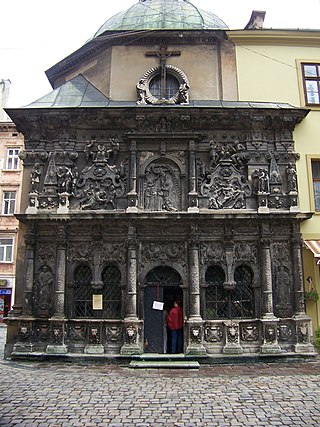
The Boim Chapel is a monument of religious architecture in Cathedral Square, Lviv, Ukraine. It was constructed from 1609 to 1615 and is part of Lviv's Old Town, a UNESCO World Heritage Site.
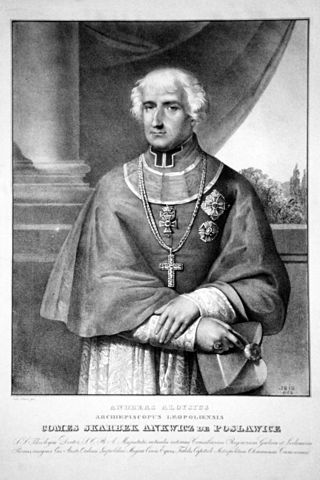
Andrzej Alojzy Ankwicz was the Roman Catholic archbishop of Lwów (Lviv) in 1815–1833 and archbishop of Prague in 1833–1838.

The Dormition or Assumption Church is a Ukrainian Orthodox church in the city of Lviv, Ukraine. At present it belongs to the Lviv Diocese of the Orthodox Church of Ukraine.

Jan Henryk de Rosen is best known as a Polish artist of murals and mosaics. He served in World War I in various capacities, rising to the rank of captain in the Polish army and earning a range of military honors. De Rosen also served as a diplomat for Poland. He moved to the United States in 1939 where he continued to complete large-scale commissions for churches and other institutions. In America, De Rosen was a research professor of liturgical art at the Catholic University of America in Washington, D.C.

The architecture of Poland includes modern and historical monuments of architectural and historical importance.

Manevychi is a rural settlement in Kamin-Kashyrskyi Raion, Volyn Oblast, western Ukraine. It was the administrative center of Manevychi Raion until the raion was abolished in 2020. Population: 11,725.
Giacomo Briano (1589–1649) was a Polish Jesuit and architect of Italian descent. He worked in Poland from 1617 to 1621 and from 1630 to 1632.

Lviv Dormition Brotherhood also known as Lviv Stauropegion Brotherhood was an influential religious organization associated with the Dormition Church in Lviv and one of the oldest Brotherhood Orthodox organizations. It was first an association of Orthodox and then, from 1708, also Greek Catholic burghers in Lviv. Like other brotherhoods in Ukraine, it is also a military force tasked with defending the Orthodox church and the faith, particularly against Polish and Latin influences.

















